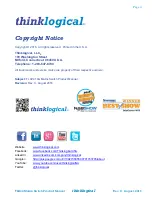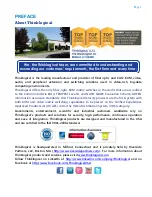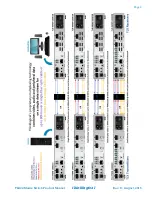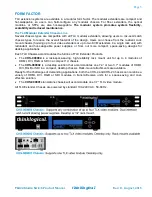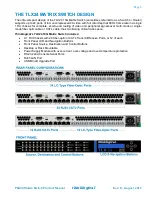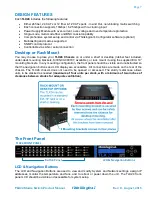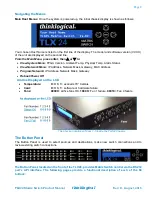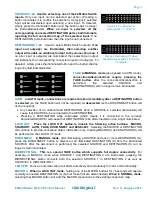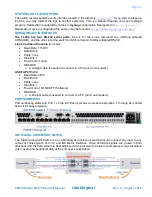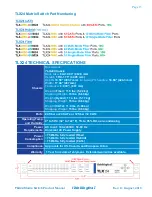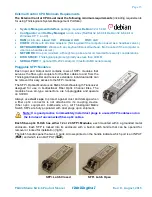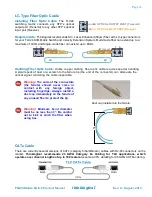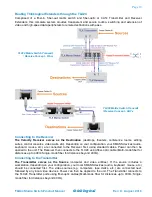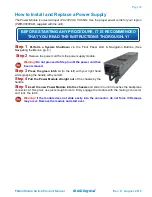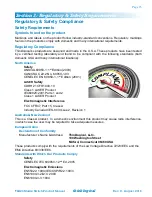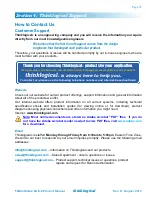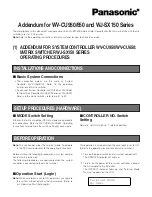
Page 10
TLX24 Matrix Switch Product Manual
thinklogical
Rev. C, August, 2016
SNAPSHOT
n
When in LOCK OUT mode,
holding one of the SNAPSHOT buttons for >5 seconds will
capture the full connection map including those DESTINATION(S) that are disconnected.
When in
NORMAL mode,
pressing that SNAPSHOT button will replace all the connections with the SNAPSHOT
connection map (not an additive action).
RESET
The reset button is recessed behind the front panel and can be pressed with a fine tipped tool.
This will reset the entire unit and is used only in extreme cases.
Preferred ways of resetting the unit
use the front panel menus.
THE POWER SUPPLY MODULE
The TLX24 Power Supply is a high efficiency, 650 watt supply
(100-240VAC, 50-60Hz input) with a
12V main output
and a
12V standby
. The supply may be hot plugged and includes an
internal cooling fan, status LEDs on the outer panel and over-
current, over-voltage and over-temperature protection. (See
How to Install and Replace a Power Supply
, Pg.22)
THE PROCESSOR
– i.MX 6 QUAD (Freescale)
The Processor platform key features:
ARM Cortex-A9 MPCore 4 x CPU
Memory Interfaces
64-Bit DDR3-1066
SD (Memory Card Specification, v3.0 including high-capacity SDHC cards up to 32 GB.
Serial NAND Flash (SPI)
SATA II, 3.0 Gbps HDD
EIM Bus (FPGA Parallel Bus I/F)
HDMI 1.4 port
USB 2.0 Host (2 ports)
UART (4 ports)
Gigabit Ethernet Controller (RGMII)
GPIO (32 bits)
I2C Masters (3 ports)
Internal 100 Megabit Ethernet Interface for Controller to Controller communications
THE NETWORK INTERFACES
The default subnet used by the TLX24 is 192.168.13.xxx.
Users may change to their own subnet by
reconfiguring the switch
’s network startup.
This is detailed in the document
:
How_To_Change_A_TLX_Matrix_Switch’s_IP_Address.pdf.
The switch uses several network ports for control and status. Port 17567 accepts commands to control
the switch.
The command API is described in the manual
:
TLX_Matrix_Switch_ASCII_API_V5.pdf.
There are other ports that can be read to access system configuration and operating data. The actual
data format varies by model and is described in the following sections. There are five blocks of data
available for reading.

